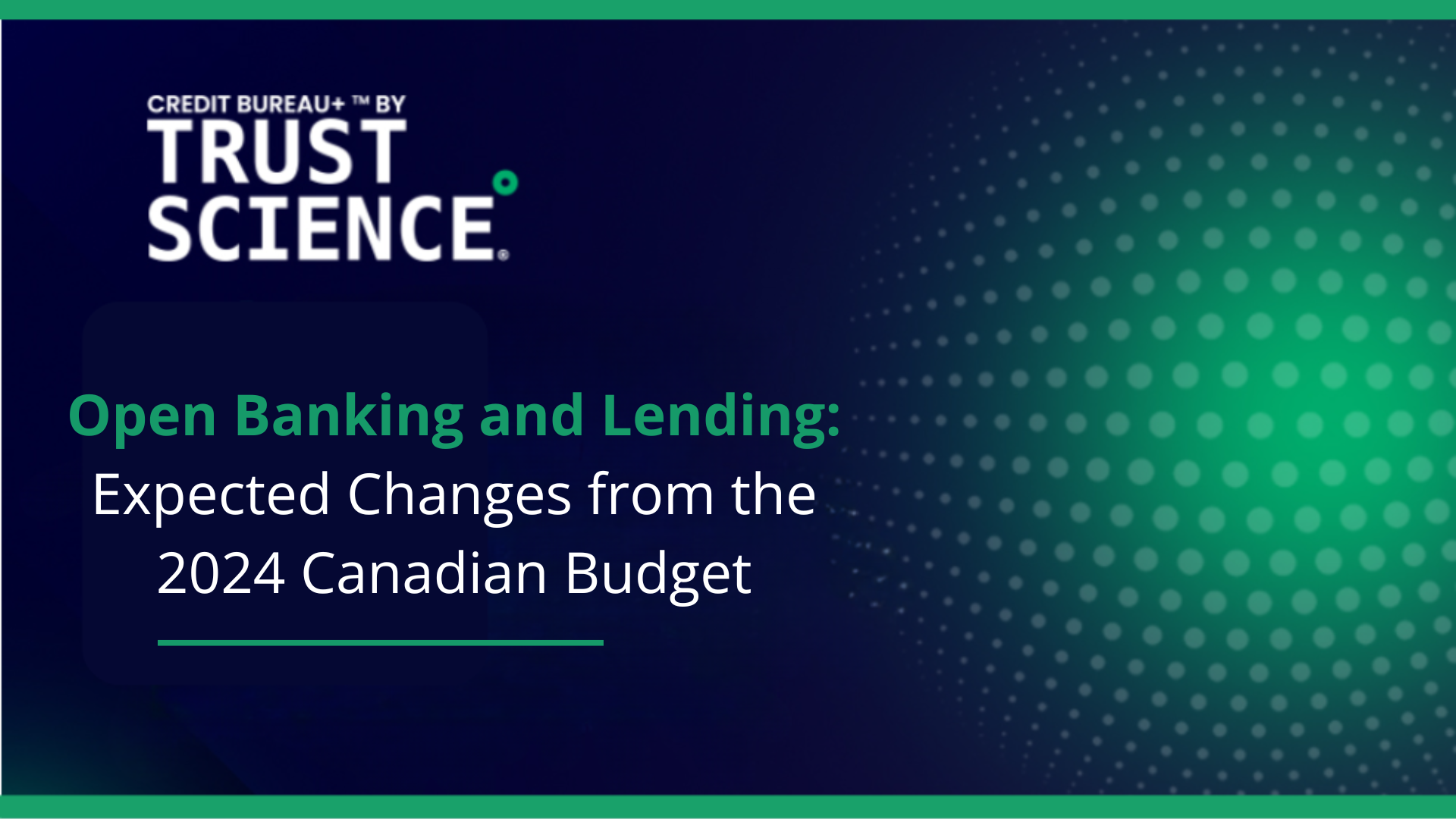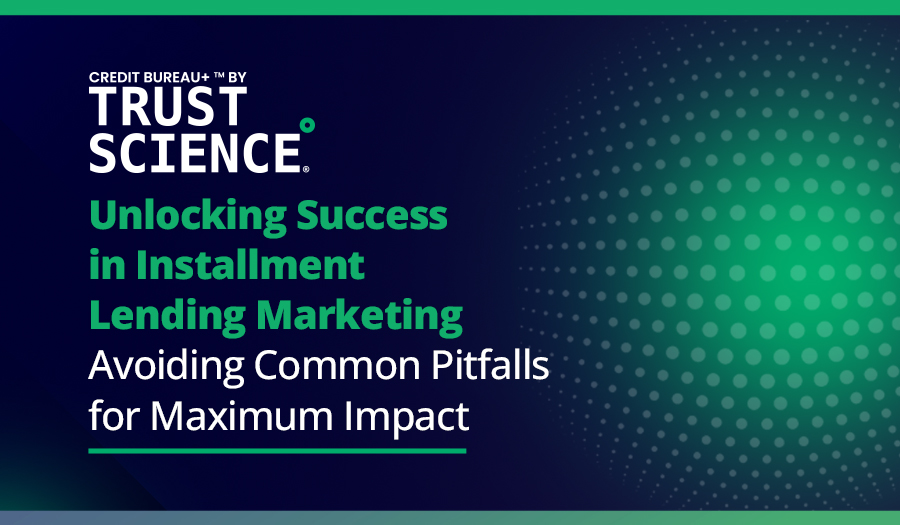For lenders looking to scale and grow, or even for lenders looking to keep up their current volumes, effective marketing campaigns are key to driving volume and contributing to the bottom line. However, many marketing efforts often fall short of achieving their full potential. With an increasingly competitive landscape, this guide can help you think critically about your own marketing efforts and find areas to continue to improve and emerge ahead of competitors.
The Pitfalls
From missing data to targeting the wrong prospects to risk misalignment to customer experience challenges, here’s our selection of the most common pitfalls holding marketers back in installment lending.
#1: Disconnect Between Results and Campaigns
The most fundamental point where marketing begins to break down is where applications cannot be directly connected with campaigns. Often, this is a flaw fundamental in certain channels: organic, traditional media, or even SEO can struggle to show direct value. However, even campaigns like lead generation or direct mail can fall apart if the infrastructure is not in place to track these leads. Ultimately, while having well-diversified channels is an important part of a marketing strategy, failing to attribute results to specific campaigns results in a general “guesswork” approach in terms of figuring out what works and where to improve or double-down. Furthermore, lacking attribution to results can make marketing leaders struggle to justify value and ROI when seeking continued budgetary allocation, despite doing all of the right things.
#2: Missing Intermediate Metrics
Closely related to a lack of attribution is a lack of intermediate or stage-by-stage metrics. Most marketers are able to track the “big” KPIs that the Board and Executive are looking for: return on investment, return on advertising spend, net funded rate, and cost per funded loan are all generally well-tracked. When these metrics are performing well, intermediate metrics are often overlooked. However, when the big KPIs start to falter and executive pressure falls on marketing to improve, a lack of intermediate metrics handcuffs marketers in their attempts to diagnose weakness and improve even within campaigns. Even worse, if multiple campaigns share certain same processes or stages, failing to have metrics on each stage could result in cutting out things that are working and leaving a faulty common denominator that ultimately makes performance suffer even more.
#3: Forgetting About Risk
Ultimately, before any lead can be converted into a revenue-generating loan, it will have to pass through the risk department’s screening. When marketing forgets about risk and just focuses on bringing in leads, the end conversion can often severely struggle after risk knockouts out majority of the leads. A lead that gets rejected by risk is not a lead at all, and will pollute the performance of otherwise good work in marketing. Not only do these bad leads result in wasted ad spend, they incur additional adjudication costs in the risk department, create a massive customer experience problem (see #5), and ultimately lead to marketing leaders suffering come evaluation time, especially for earnings-focused company cultures.
#4: Mismatched Loan Offerings
Most marketers intuitively understand customer propensity. However, in lending, different credit quality levels draw different competitors and expectations in terms of rate, amount, and payment. Often, industry “propensity models” lack a sufficient degree of specificity to align the specific product offering with the “in-market” prospect – for example, a prime borrower won’t want to sign on for a loan at subprime terms, despite being “in-market” for a loan. When marketers fail to create alignment between customer and offering, the prospects can be, in effect, improperly selected resulting in poor performance.
#5: Clunky Customer Experience
Intuitively, the more friction involved, the more drop-off is expected – as a general rule, friction should only be added where strictly necessary to ensure the prospective applicant is not fraudulent and is actually qualified for the loan. On pre-approved leads, usually from lead generation or direct marketing channels, especially in a digital world, customers have an expectation for fast, seamless experiences. When lenders fail to deliver, a lot of potential customers will be lost – in fact, those that stay are likely to be adversely selected as bad borrowers, because they may lack alternative sources of financing and therefore “need” the loan. Equally important, lenders often misalign the customer acquisition experience and the loan servicing experience – when this happens, loan performance will suffer and marketing will likely be called to answer for an unprofitable campaign or channel.
The Solutions
Thankfully, the pitfalls are generally fairly straightforward to resolve between in-house fixes and well-established industry partners like Trust Science. And if one of these pitfalls or solutions resonates with you and you’d like to chat more about it, book a no-obligation consultation with one of our marketing experts here: [CT Booking Link].
#1: Diversifying Channels Into Attributable Channels
If you have a large proportion (>70%) of unattributable traffic during your peak times, it may be wise to look at pursuing more attributable channels. That is not to say that you should divest entirely from effective but attributable channels. Having attributable leads and campaigns that you can use to “turn on/off the taps” are often critically important components of a marketing strategy, even if they are not always in use, in order to make up quotas, push volume during strategic times, and support growth. It’s also important to understand that these are not necessarily mutually exclusive concepts: complementing a successful general marketing initiative with pointed campaigns is often a highly successful strategy deployed by lenders booking the highest volumes.
#2: Creating Processes for Stage-by-Stage Attribution
On channels where you have a clear, direct call to action (usually lead generation and direct mail), you have the ability to set up separate funnels with clearly defined steps for the lead to interact with. This accomplishes several key things that will help the entire customer acquisition process:
- Captures “First Touch” Conversion by Campaign
When the prospect responds to the call to action and enters into a separate funnel, you immediately can attribute that prospect to that campaign.
- Creates Tailored Customer Experiences
By focusing on the customer experience differently in each channel, you can create experiences that best align with your risk tolerances, customer personas, and goals to ultimately convert more customers and accentuate first-touch conversions. This is also a great way to signal to risk that a lead has already been screened, and can therefore be fast-tracked through the application process.
- Funnel Break-Down Reporting
By tracking how the prospect moves through each stage of the funnel, you can clearly see where drop-off is coming from or which stages are performing really well. In doing so, you have the ability to confidently make tweaks to underperforming areas and improve campaign performance. Furthermore, this is where A/B testing can really come into play and help optimize funnel performance.
#3: Risk-Aligned Prospect Selection
The risk department does not necessarily need to be a part of your marketing strategy, but risk should be taken into account when purchasing leads or selecting your prospects for a direct marketing campaign. While some large lenders may have a cross-functional team that manages this, this can be a costly and time consuming endeavor on internal resources. Instead, most lenders opt for a third-party solution provider to partner with for this processing. Regardless of which approach you choose, having a partner that specializes in lending and understands the downstream risk considerations will help pre-filter out leads that risk would ultimately reject anyways, which will enable marketers to stop buying unconvertible leads. Choosing the right partner is incredibly important here, and we’ve prepared a list of requirements and questions you need to consider before making your selection: [CHECKLIST]
#4: Offering Alignment with the Credit Profile
This particular function is important enough to call out here, though strong partners likely can handle this for you. Better credit quality customers expect a higher loan amount at lower rates, while lower credit quality customers may be more comfortable with higher rates and limited amounts. Balancing both creating a compelling offer that the borrower will accept with an offer that aligns with your organization’s risk parameters is what separates partners like Trust Science from many other solutions.
Further to this, Trust Science data shows that higher credit scores tend to respond less than lower credit scores. Another key element to this strategy is finding those that are generally passed over by more “industry standard” methods and are still good credit risks eligible for your intended offer. These Invisible Prime™ prospects are often gold mines for lenders as they respond more favorably to marketing efforts and have better repayment behavior – finding these prospects is a key value addition that third party partners like Trust Science can bring, even for lenders with their own cross-functional team.
#5: Customer Experience Alignment
While there may be customer experience best practices certainly exist, it is incredibly important that you align customer experience with certain marketing considerations and downstream servicing considerations. For example, if you require borrowers to come into a branch to book the loan, you’ll want to ensure that you have effective geo-fencing for your marketing efforts to only market to those that are close enough to your branches.
Where this meets with servicing is often where marketers miss: some lenders require that a loan that was originated online or by cashing a mailed check be paid in-person, or that renewals need to be done in-person. This disjointed process often causes borrowers to grow frustrated, which impacts repayment, reconversion, and general customer satisfaction. Ensuring that your marketing and servicing efforts are aligned with each other is a must for a successful campaign from start to finish.





